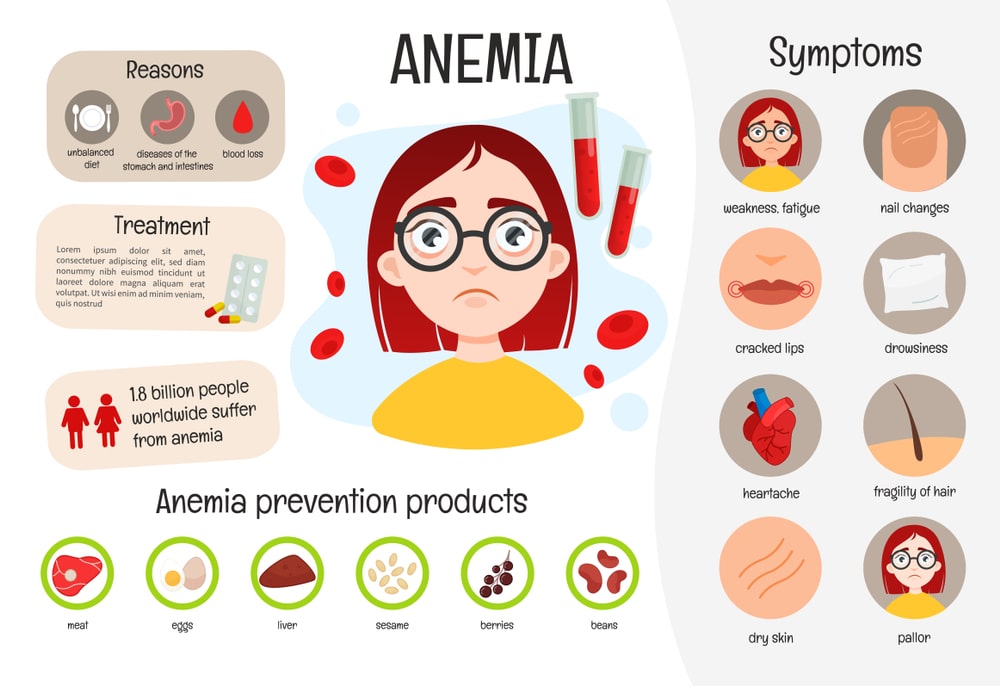
Low hemoglobin levels, also known as anemia, is a common condition that occurs when the body doesn’t have enough red blood cells to carry oxygen to the body’s tissues. Hemoglobin, a protein found in red blood cells, is responsible for carrying oxygen throughout the body. A decrease in hemoglobin levels can lead to fatigue, weakness, and shortness of breath. In this article, we will discuss the causes and symptoms of low hemoglobin levels, as well as home remedies that can help increase hemoglobin levels.
Causes of Low Hemoglobin
Iron deficiency is one of the most common causes of low hemoglobin levels. The body needs iron to produce hemoglobin, and a lack of iron can lead to a decrease in hemoglobin levels. Other causes of low hemoglobin levels include vitamin deficiencies, blood loss due to injury or surgery, chronic diseases such as kidney disease or cancer, and genetic factors.
Symptoms of Low Hemoglobin
The symptoms of low hemoglobin levels can vary depending on the severity of the condition. Common symptoms include fatigue, weakness, shortness of breath, dizziness, headache, and pale skin. In severe cases, low hemoglobin levels can lead to heart problems and other complications.
Home Remedies to Increase Hemoglobin Levels
There are several home remedies that can help increase hemoglobin levels in the body. These include:
Iron-rich foods:
Eating foods that are rich in iron, such as spinach, beans, lentils, red meat, and poultry, can help increase hemoglobin levels. It’s important to note that iron from plant-based sources is not absorbed as well as iron from animal sources, so vegetarians and vegans may need to consume more iron-rich foods to get the same benefits.
Vitamin C:
Consuming foods that are high in vitamin C, such as citrus fruits, berries, and leafy greens, can help increase the absorption of iron in the body. Vitamin C helps convert the iron in plant-based foods into a form that is easier for the body to absorb.
Folic acid:
Folic acid, also known as vitamin B9, is essential for the production of red blood cells. Foods that are high in folic acid include leafy greens, fortified cereals, and legumes.
Vitamin B12:
Vitamin B12 is also essential for the production of red blood cells. It’s found in animal-based foods such as meat, fish, and dairy products.
Exercise:
Regular exercise can help increase hemoglobin levels by promoting the production of red blood cells.
Hydration:
Drinking plenty of water can help prevent dehydration, which can lead to a decrease in hemoglobin levels.
Conclusion
Maintaining healthy hemoglobin levels is important for overall health and well-being. Low hemoglobin levels can lead to fatigue, weakness, and other complications. While home remedies can be helpful in increasing hemoglobin levels, it’s important to see a doctor if symptoms persist or worsen. A doctor can determine the underlying cause of low hemoglobin levels and recommend appropriate treatment.
Sources of Information:
- Centers for Disease Control and Prevention. (2022). Anemia. https://www.cdc.gov/nchs/fastats/anemia.htm
- National Heart, Lung, and Blood Institute. (2020). What is anemia? https://www.nhlbi.nih.gov/health-topics/anemia
- National Institute of Diabetes and Digestive and Kidney Diseases. (2022). Iron-deficiency anemia. https://www.niddk.nih.gov/health-information/blood-urine-tests/anemia-iron-deficiency
- Harvard Health Publishing. (2020). A guide to anemia. https://www.health.harvard.edu/diseases-and-conditions/a-guide-to-anemia
- American Society of Hematology. (n.d.). Anemia. https://www.hematology.org/education/patients/anemia
- Cleveland Clinic. (2021). Anemia. https://my.clevelandclinic.org/health/diseases/14613-anemia
- National Institutes of Health. (2020). Iron. https://ods.od.nih.gov/factsheets/Iron-Consumer/
- National Institutes of Health. (2020). Vitamin C. https://ods.od.nih.gov/factsheets/VitaminC-Consumer/
- National Institutes of Health. (2019). Folate. https://ods.od.nih.gov/factsheets/Folate-Consumer/
- National Institutes of Health. (2020). Vitamin B12. https://ods.od.nih.gov/factsheets/VitaminB12-Consumer/


